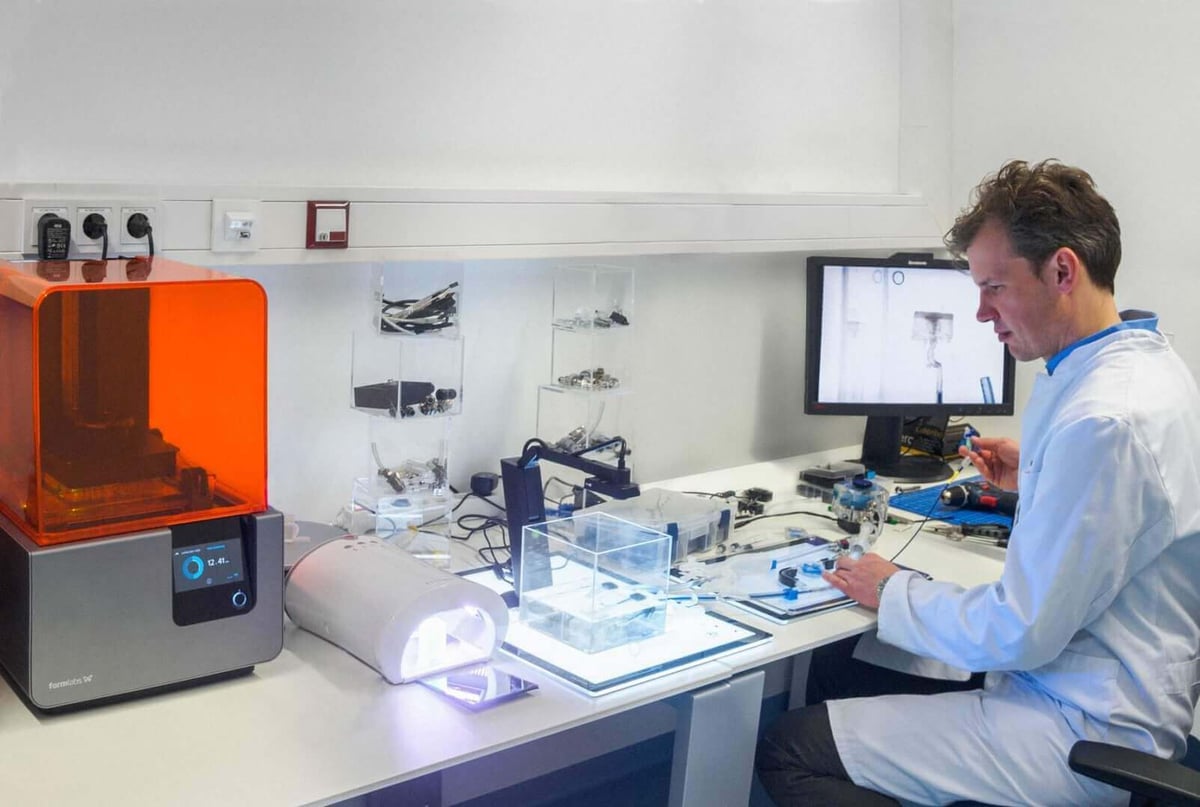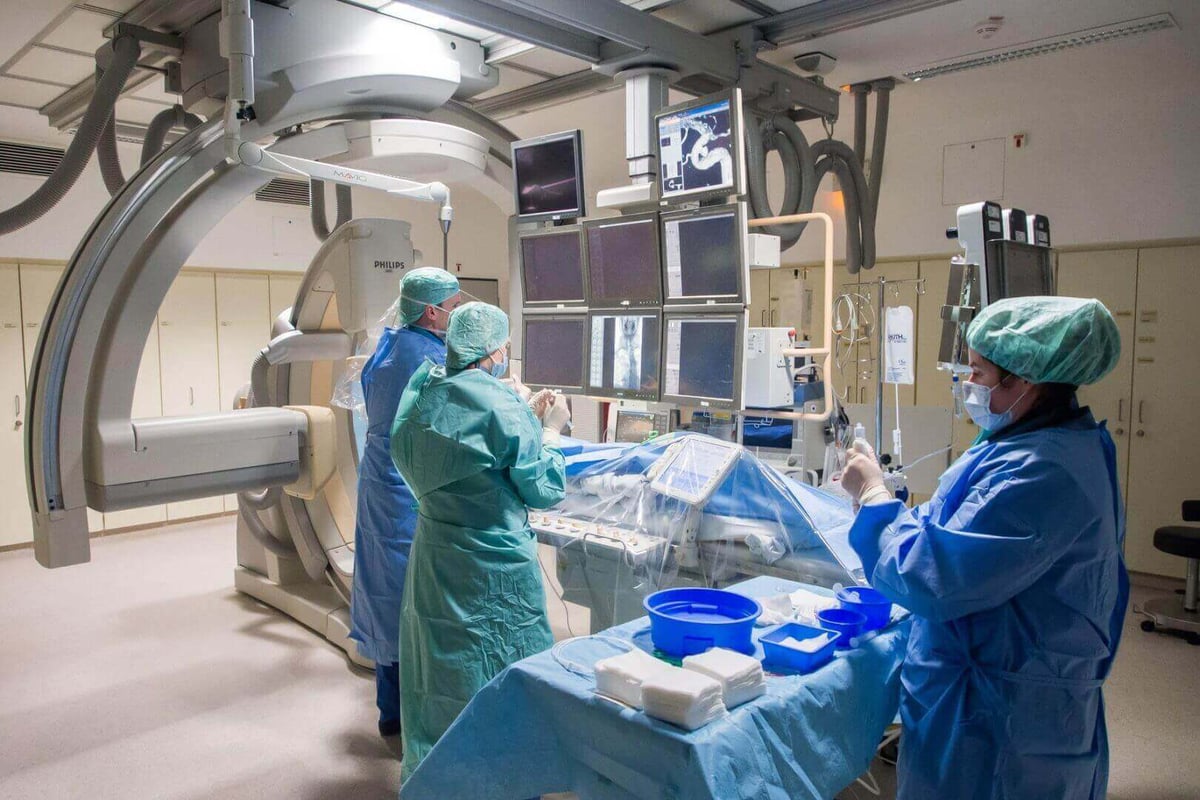All3DP talks to Dr. André Kemmling, a neuroradiologist who is using a Form 2 SLA 3D printer to produce patient-specific brain artery models.
Dr. André Kemmling from the University Hospital of Lübeck is a longtime user of Formlabs’ SLA 3D printing technology. The neuroradiologist is creating patient-specific models of arteries to prepare for intensive operations on brain aneurysms.
Operating on brain aneurysms is extremely dangerous. Stents or coils need to be placed inside tight brain arteries with near-perfect precision. Once this flow diverter is released and expanded within the artery, there’s nearly no going back to save the patient.
Thanks to the Form 2, Dr. Kemmling is able to print patient-specific models before operating on an aneurysm. These models are much more accurate and faster to produce than other conventional training methods.

Personalizing the Treatment of Brain Aneurysms With 3D Printed Models
The doctor is one of the first Form 2 owners in Germany and has been a longtime supporter of the 3D printing company. Instead of waiting weeks for patient-specific silicone models, he can now print eight aneurysm cases in just two days.
To print these models, Dr. Kemmling uses Formlabs Clear Resin, providing a much-needed transparent look to these training modules. These 3D printed models have a resolution of 0.025 mm, providing much higher detail than the conventional models offer.
“This workflow takes about an hour, this is something we’d like to speed up in the future by making custom-made post-processing software for these images. The printing part take 10 to 15 hours with curing. So in two days I can create a patient-specific aneurysm model, instead of waiting three weeks or more for a silicone model. These silicone models also have much less resolution,” Dr. Kemmling told All3DP.
Brain aneurysms require extremely time sensitive procedures, making 3D printing an ideal surgical preparation tool. This allows surgeons to practice repeatedly before performing an operation on the patient, making them more confident and increasing the procedural success rate.
By practicing on a 3D printed model, the operation time can be reduced by up to 50 percent. While deploying a flow diverter into a brain aneurysm takes around 30 to 50 minutes with no training, using a 3D model cuts that time down to 15 to 25 minutes. He’s also able to show the patients this 3D printed blood vessel, allowing them and their families to better understand the surgery at hand.
How Formlabs is Pushing Medical 3D Printing Forward
getting into the market, but most of them were FDM printers. We tried these out at first, but the resolution wasn’t high enough for these small models. Also, they didn’t have any transparent materials, which we needed to use for direct visualization,” Dr. Kemmling told us.
Searching for a way to produce higher quality models in translucent materials, the neuroradiologist found the Form 1 back when it was a mere Kickstarter campaign. By the time the Form 1+ came out, Dr. Kemmling was ready to dive back into the medical 3D printing realm.
“When the Form 1+ came out, I ordered one right away. We started the project with that printer, and we saw it worked. Handling of the Form 1+ was still kind of cumbersome because it didn’t have the features that the Form 2 has, like automatic refill, wireless connectivity, and so on. When the Form 2 came out I already knew it addressed the main problems of the last model, so we bought two. That’s what I’ve been working with for over one-and-a-half years,” he added.
While Dr. Kemmling uses his Form 2 to prepare for surgery on brain aneurysms, he also hosts workshops to help other physicians get acclimated with 3D printing. Medical professionals can send patient-specific cases over, and quickly have a 3D printed model to practice on.
Someday, Dr. Kemmling hopes to outsource this training workshop into a company of its own, providing doctors across the world with patient-specific models at the click of a button.

Source: Dr. Kemmling/Formlabs
License: The text of "Form 2 Helps Neuroradiologist Operate on Brain Aneurysms" by All3DP is licensed under a Creative Commons Attribution 4.0 International License.